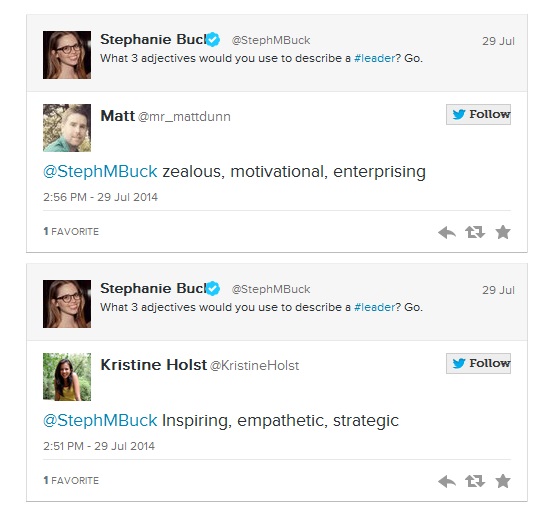Women, You Don’t Have to Be Loud to Be Good Leaders

It was a Friday afternoon in New York City, chilly inside the auditorium. Women crowded toward the front of the stage, their goodie bags spilling Luna Bars and lipstick samples into the aisles. For the first few hours of the conference, a parade of charismatic executives in color-blocked dresses had urged attendees to “speak up,” “sit at the table,” become vocal members of the C-suite.
The popular refrain for today’s latest women’s movement (Need I say it? “Lean in.”) is a tidy sound bite that encapsulates a powerful message. Sheryl Sandberg rightly encourages women to be assertive and test their fears, primarily in the workforce. Yet many women are misinterpreting this feminist battle cry to mean aggressive assertiveness, loud doggedness.
The pendulum is swinging too far and marginalizing women who simply aren’t meant to lead loudly.
For years I suspected quiet people weren’t meant to be leaders at all. After all, in Western culture and particularly the United States, leaders are loud winners, followers are quiet losers.

Image: Instagram, Cara Delevigne
Turns out, it’s a sham. And we fell for it. Hard. You don’t need to be an outspoken, aggressive person to lead. It’s time for women to stop mimicking one version of an extroverted executive, stop pushing for conformity. It’s damaging on a personal level, and it hurts the women’s movement as a whole.
So, when did vocal leadership become the benchmark for success in today’s women’s movement? And where does that leave people like me, who often fight against our culture’s leadership demands? Are we leaving enough space for female followers, or quiet leaders?
Or is it time to democratize the definition so we can all be successful (but different) leaders?
Susan Cain, bestselling author of Quiet: The Power of Introverts in a World That Can’t Stop Talking, says “charismatic leadership” is the cornerstone of Western culture — unfortunately. For this group, the most effective leaders have imperative, take-charge personalities; they create turbulence striving toward their goals and leave a jolting wake after they’ve achieved them. They are hard to ignore.
Women noticed the noise, and adopted it, particularly after Lean In told women to set aside self-doubt and eagerly pursue leadership opportunities. However, today’s feminist messages are missing crucial points, many of which Sandberg makes herself: Set boundaries, slow down and know that it’s OK to be still.
Cain says today’s feminism is trying to make up for centuries of women being silenced by telling them, “OK, now you’re free to be loud,” by which you will be become an effective leader.

Image: Mashable illustration, Bob Al-Greene
A 2012 CNN article titled “How to have more Sheryl Sandbergs” urges more women to strive for big titles in everything from science to corporate settings. Authors Courtney E. Martin and Katie Orenstein posit that the sooner we see women vocally fight for these top positions, the faster others will follow:
Who hasn’t heard a parent quip, “If all of your friends were jumping off of a cliff, would you?” There’s some profound wisdom in that old cliché: If your friends aren’t aiming for high-profile corporate leadership or going head-to-head on the Sunday morning talk shows, you’re not likely to, either. We can create more Sandbergs by surrounding ourselves with confident, outspoken women.
It’s a message Cain hears at all too many women’s conferences: “‘You should be loud in order to make your mark in the world.’ Not only is that not true, but it’s also limiting for women who are not naturally loud,” Cain tells Mashable. “It’s a limited view of what leadership can mean.”
Instead, she champions the power of quiet leadership.
University of California, Berkeley psychology professor Dacher Keltner, Ph.D., doesn’t see an outright problem in encouraging aggressive leadership, however. “People need to feel bold, and they need to be assertive, and I think that’s the upside to the Lean In hypothesis,” he says.
But he admits, our culture has antiquated, mistaken ideas about influence and power that trace back to Machiavelli, whose theories implied that leaders need to be coercive and forceful to achieve power. Those ideas largely don’t work today.
“That kind of style is in part not only bad news for your power and influence, but it hurts your team. It makes people stupid. It makes people not speak out,” says Keltner. “[Lean In] really missed the other ways in which we influence — which are rising in this world — of leading from you bringing people together as opposed to leaning in.”
We’re approaching a cultural moment when we can add subtlety to the message. Some of us will be loud and proud. Others will be quietly firm.

Image: Mashable illustration, Bob Al-Greene
Thankfully, the scales are tipping. We’re far past the “think manager, think male” dictums of the mid-20th century.
“We’re really in this dramatic shift in our culture about what influence and power are. There are big debates about hard versus soft power,” says Keltner. The quieter types are starting to gain influence as leadership theory and management technique evolve. “The super pushy, assertive types aren’t going to be as influential as the person who builds through quiet means, strong collaboration.”
In fact, four out of 10 executives test as introverts. Many of today’s top CEOs are shy and reflective — Microsoft founder Bill Gates is a famous one, as is former Sara Lee CEO Brenda Barnes. Even celebrities like Emma Watson, recently named a UN Women goodwill ambassador, are speaking out about their shyness, quietness and general aversion to the spotlight.
“Leadership is changing,” says Keltner.
Leadership seminars and management trainings are starting to teach nurturing, motivational tactics — qualities traditionally seen as “female” — over commanding, assertive traits more often prescribed “male.” You can be a Gandhi or a Rosa Parks and still lead with traditionally “feminine” qualities.
Whether women as a group tend to have a leadership advantage is another, highly debated topic entirely. Yet a 2012 Dow-Jones study found that the median number of female executives at successful companies in industries like IT, finance and health care was significantly higher than the median at unsuccessful companies in those industries. In a recent market trend reported by WSJ, funds are even investing more aggressively in companies with women at the helm, citing a correlation between strong financials and female direction. Simply put, your company is safer with more female executives, or at least with a number higher than 4.8%, the percentage of female chief executives currently on the Fortune 500 list.
There’s no doubt: More women need to be in positions of influence. We just disagree on how to get there. Because if reflective insight trumps headstrong autocracy as the preferred (and proven) leadership style, why is the women’s movement still demanding noise?
“I don’t instantly sit at the head of the table. I sit in the middle of the table, always. I don’t want to sit at the head of the table. I want to be part of the process and part of the decision,” Carol Smith, then-senior vice president and chief brand officer for Elle Group, told The New York Times in a 2009 article titled “No Doubts: Women Are Better Managers.”
It’s a more nuanced approach to Sheryl Sandberg’s message in Lean In. Sandberg encourages women to “sit at the table,” to set aside their feelings of “feeling like a fraud,” and essentially fake it ’til they make it. It’s the message today’s women’s movement has taken too far out of context. It’s not about fighting against or hiding fears of inadequacy until they make you into a different person, albeit with a better title. It’s about owning those emotions and confronting whether they represent self-doubt everyone feels, or honest-to-goodness discontent. The former will pass; the latter will cause you to question your very identity.
Are you imitating other extroverted, headstrong, happy hour types at your company because it seems the fastest way to promotion? Are you being loud and proud because you want to be, or because you were told throwing elbows earns raises? Is it who you really are? Or is it a game of identity FOMO?
“Many of us have work to do in figuring out a way to be comfortable enough to make our voices heard,” Cain says. “I’m not saying to never force yourself outside your comfort zone. But to do it in your own style.”
In other words, don’t be so loud that you lose yourself. Don’t fake it for FOMO.

Image: Mashable illustration, Bob Al-Greene
So how can we make today’s definition of leadership more accessible, particularly for women?
Here’s one idea: INFJ. It’s one of 16 personality types on the Myers-Briggs spectrum, a metric for determining how people solve problems and interact with others. It stands for “Introversion – intuition – feeling – judging.” While not exhaustive, it happens to be my particular personality combination: I’m a creative introvert with high empathy for others and a sometimes extreme need for order and organization.
Is that the personality type you want leading a team, a mission, a family? Depends, you might respond. My answer: No, it doesn’t. It doesn’t matter whether you’re an introvert, extrovert, loud, quiet, logical, creative, independent, collaborative or some combination of all. We have to find a way to embrace the unique recipe that makes each leader different, powerful in her own way.
That doesn’t involve asking all women to “become outspoken executives, overseeing lots of reports, in the white collar workforce. Take speaking engagements and elbow your way to the morning shows.” That is one brand of leader — for a very small percentage of women.
Cain says we have to fix women’s conferences by opening the doors for soft-spoken leaders. “Once we start, we’ll stop worrying about being the strongest voice in the meeting and start focusing on the people we’re working with,” Cain says.
“Courage is what it takes to stand up and speak; courage is also what it takes to sit down and listen.” —Winston Churchill
The world won’t change overnight, but there’s still hope for today’s new women’s movement. It’s time to rebrand the message: Stop telling all women to be the type of leader the workforce supposedly wants them to be; it’s false. Stop touting the type of leadership that’s “worked for men so it will work for us.” Start broadening what it means to be a leader in the first place, then celebrate and reward its differences.
SOURCE: MASHABLE


